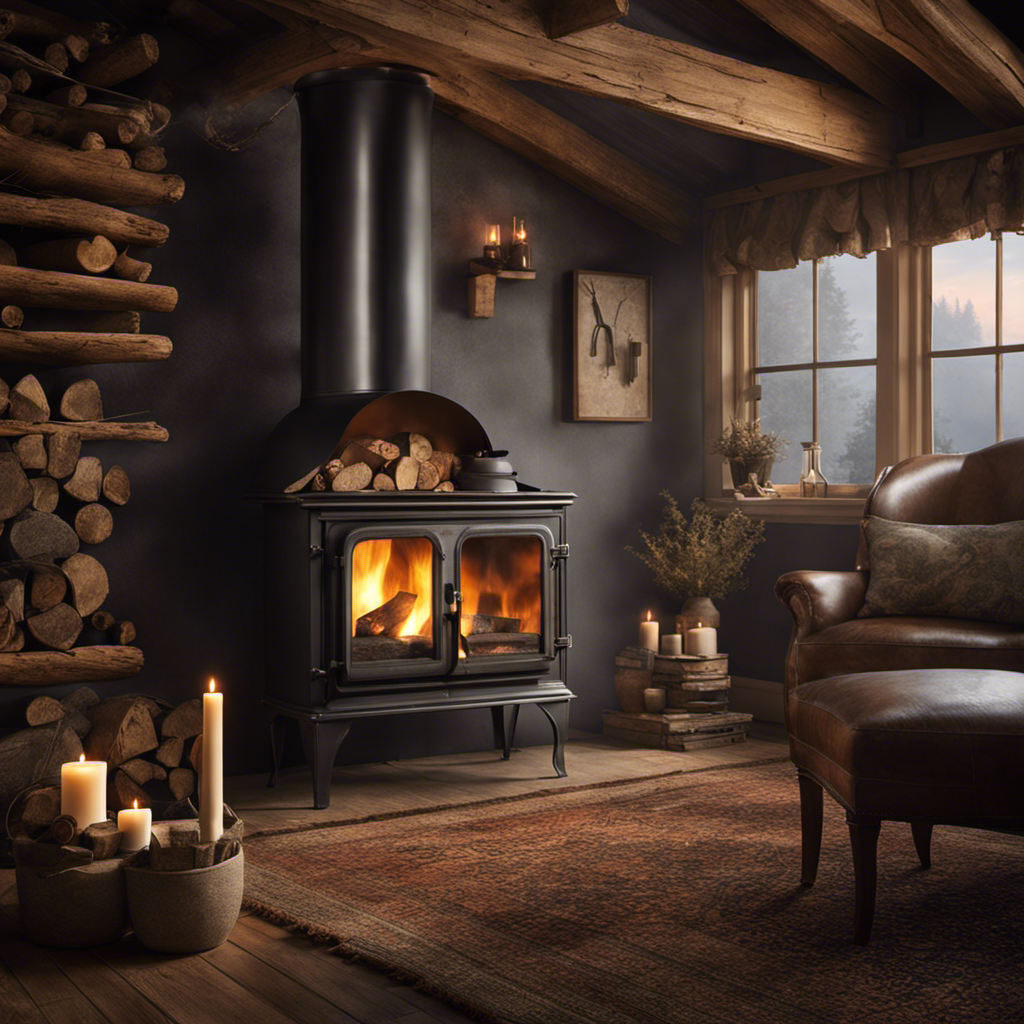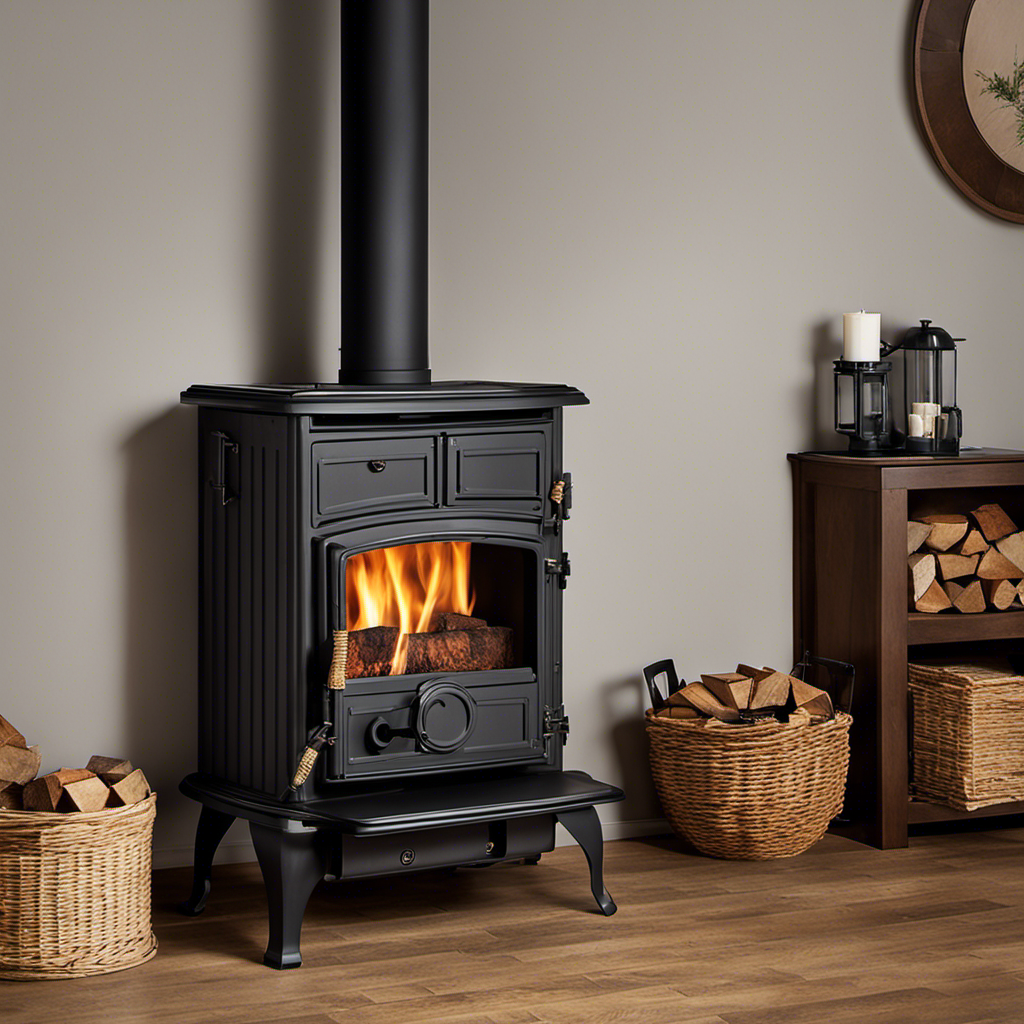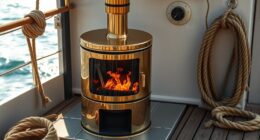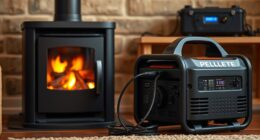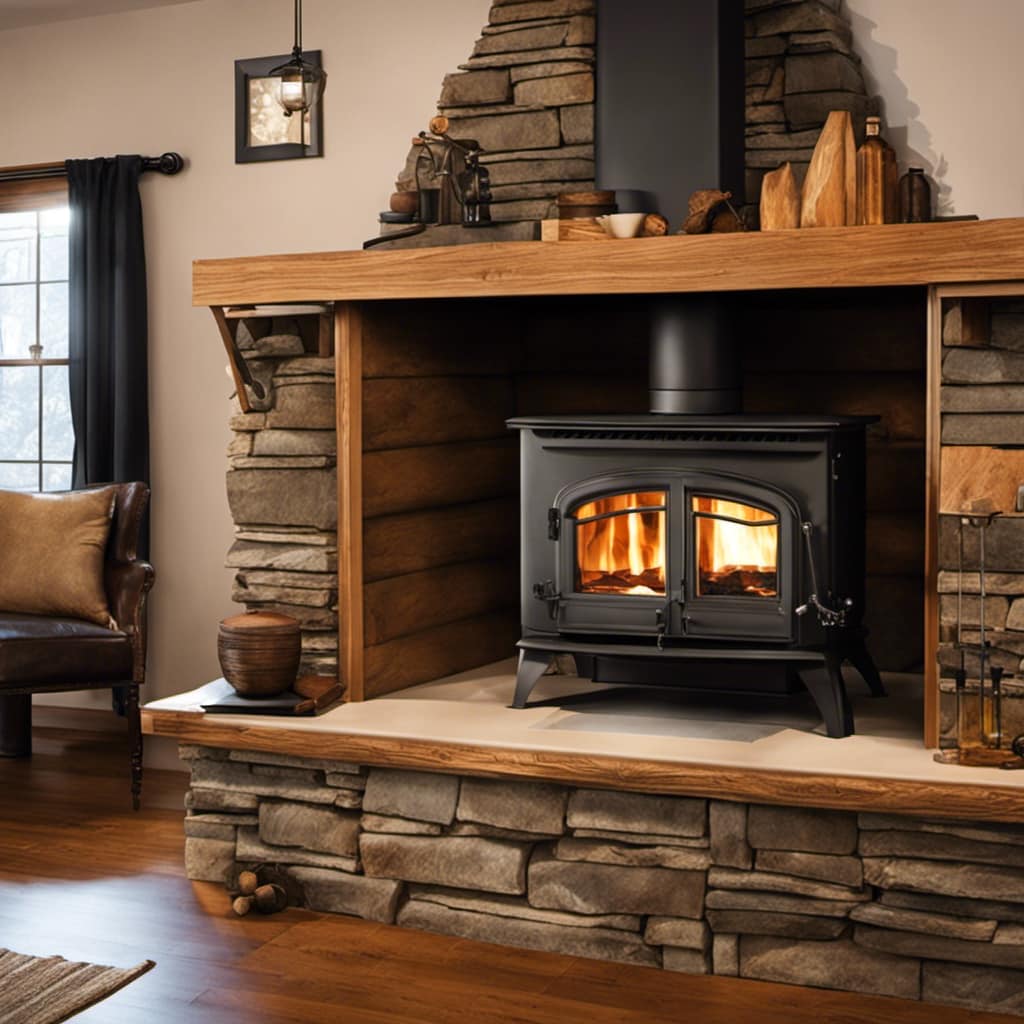
As a homeowner, I derive immense satisfaction from the warmth and comfort that my wood stove provides during the winter season.
But before I can enjoy it, I need to prepare my fireplace.
In this article, I’ll show you step by step how to do it.
From assessing the condition of your fireplace to ensuring proper ventilation, we’ll cover all the essential details.
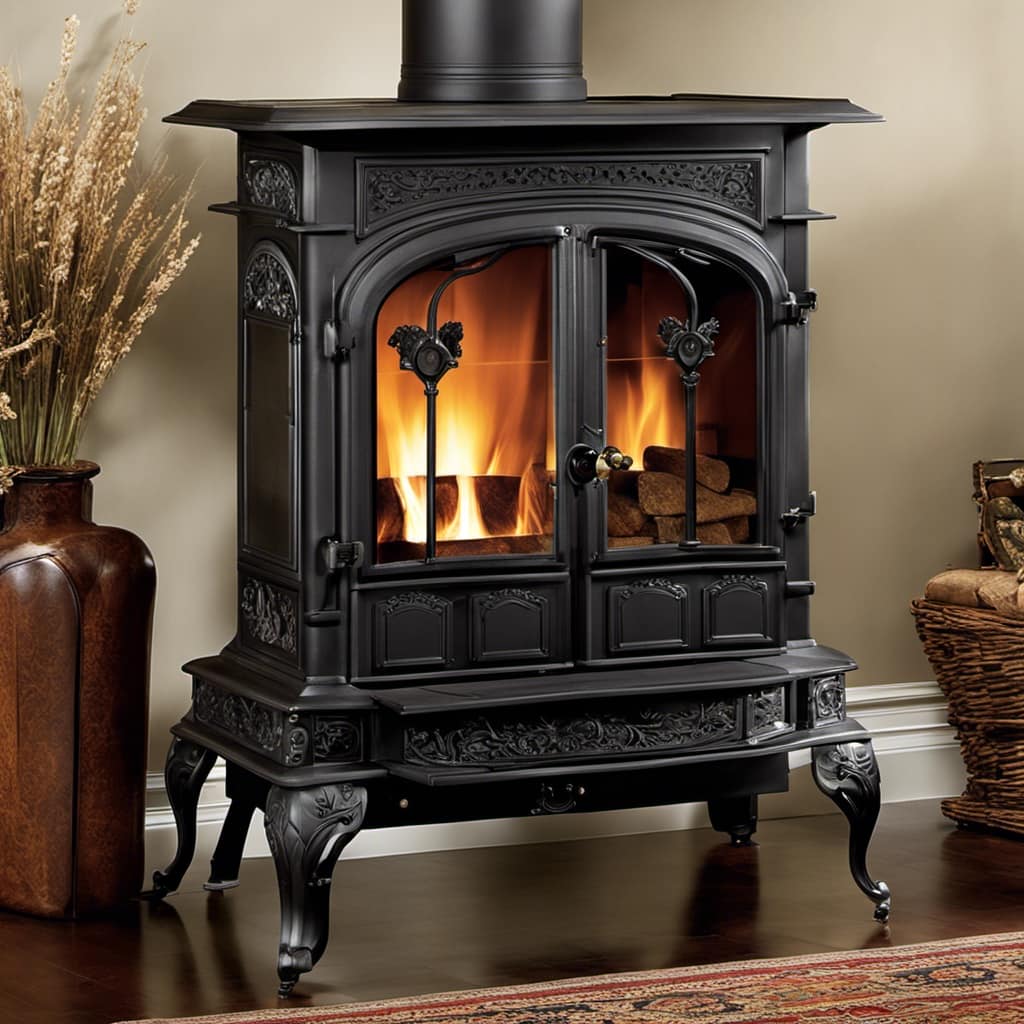
So, let’s get started and make sure your fireplace is ready for a wood stove that will keep you warm all season long.
Key Takeaways
- Hire professionals to assess the condition and safety of your fireplace
- Clean and clear the chimney to remove creosote buildup and potential blockages
- Inspect and repair the flue system, including the flue liner, cap, and damper
- Ensure proper ventilation for the wood stove by meeting height requirements, using double-wall stovepipe, and installing a carbon monoxide detector
Assessing the Condition of Your Fireplace
I need to thoroughly examine my fireplace to determine if it requires any repairs or maintenance.
When evaluating safety, it’s important to hire professionals to ensure that the fireplace is in good condition and doesn’t pose any risks.
Start by checking for any cracks or damage to the bricks or mortar.

Look for signs of water damage, such as discoloration or mold growth.
Check the damper to ensure it opens and closes properly.
Inspect the chimney for any obstructions or buildup of creosote, which can be a fire hazard.
It’s crucial to have a professional chimney sweep clean and clear the chimney regularly to prevent chimney fires.
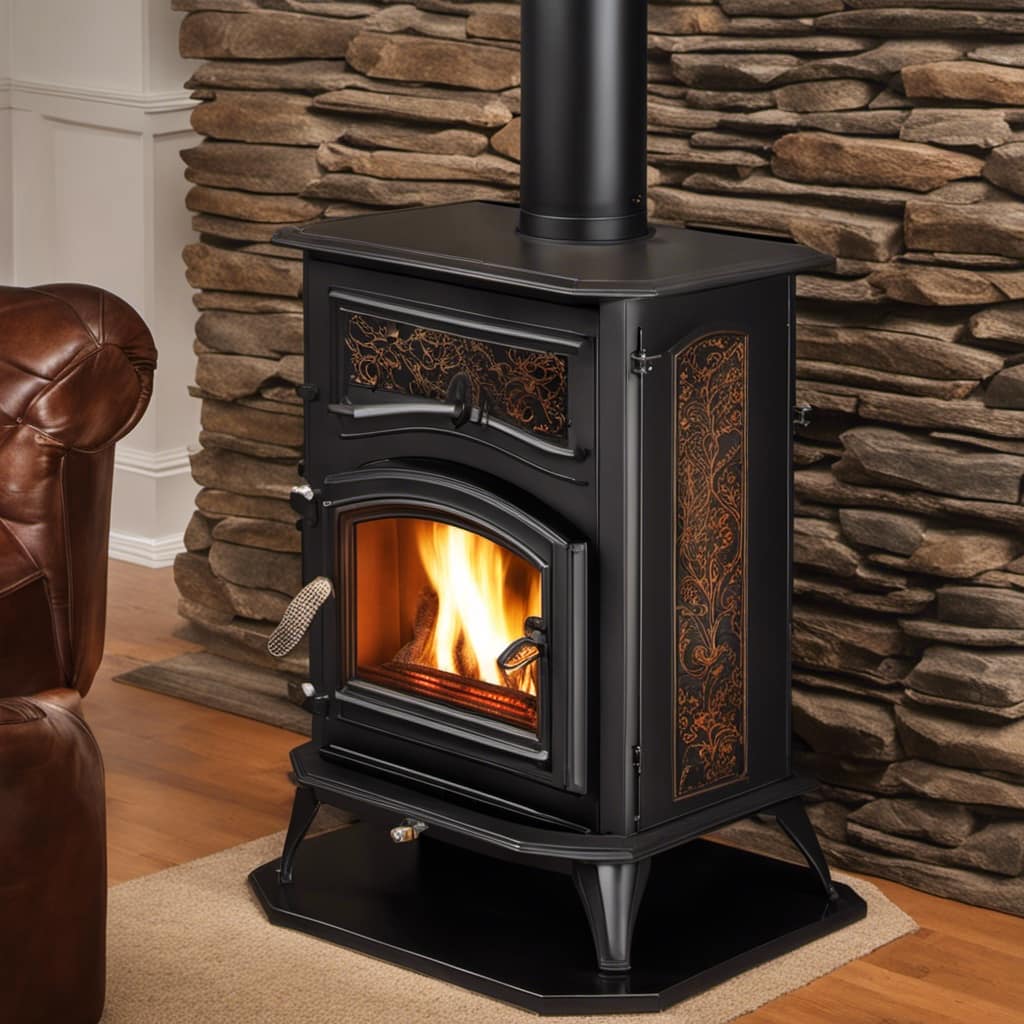
Cleaning and Clearing the Chimney
The professional chimney sweep will clean and clear the chimney to ensure its proper functioning. To accomplish this, they’ll employ various sweeping techniques and tools. Here’s a breakdown of what the process entails:
-
Sweeping Techniques:
-
Manual Sweeping: The sweep will use a long-handled brush to manually scrape off any debris and soot buildup from the chimney walls.
-
Rotary Sweeping: A rotary brush attached to a flexible rod will be inserted into the chimney and spun, effectively dislodging and removing creosote.
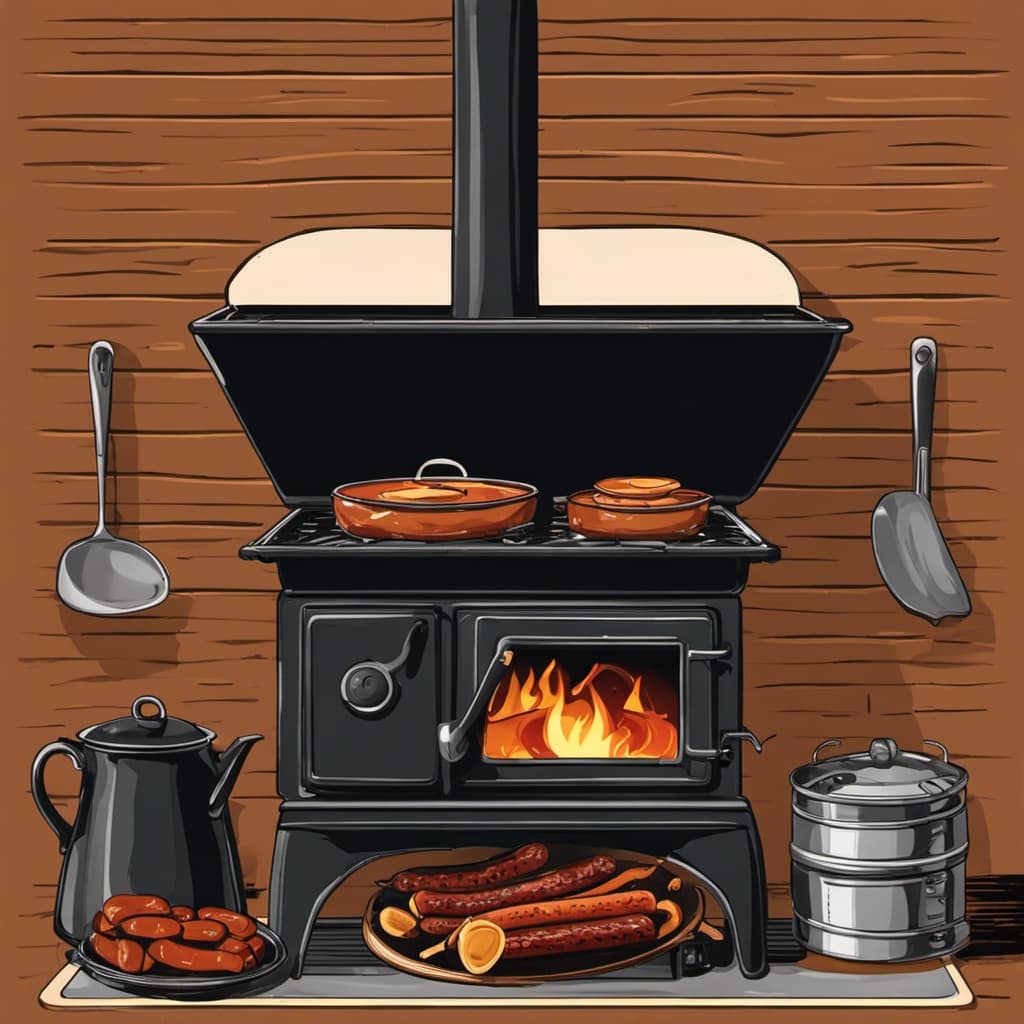
-
Removing Creosote:
-
Creosote Removal Tools: The sweep may use specialized tools like wire brushes or scrapers to remove stubborn creosote deposits.
-
Vacuuming: A high-powered vacuum cleaner will be used to collect the loosened creosote and other debris from the chimney.
By thoroughly cleaning the chimney, any potential blockages or hazards can be eliminated, ensuring the safe and efficient operation of the fireplace.

This sets the stage for the next step in the process: inspecting and repairing the flue system.
Inspecting and Repairing the Flue System
One must carefully inspect and repair the flue system to ensure its proper functioning. Flue maintenance is crucial for chimney safety.
The flue system plays a vital role in the operation of a fireplace or wood stove by allowing the safe passage of smoke and gases out of the home. Regular inspection of the flue is necessary to identify any signs of damage or blockage.
Firstly, check for any cracks or gaps in the flue liner as these can lead to smoke leakage or even a potential chimney fire.
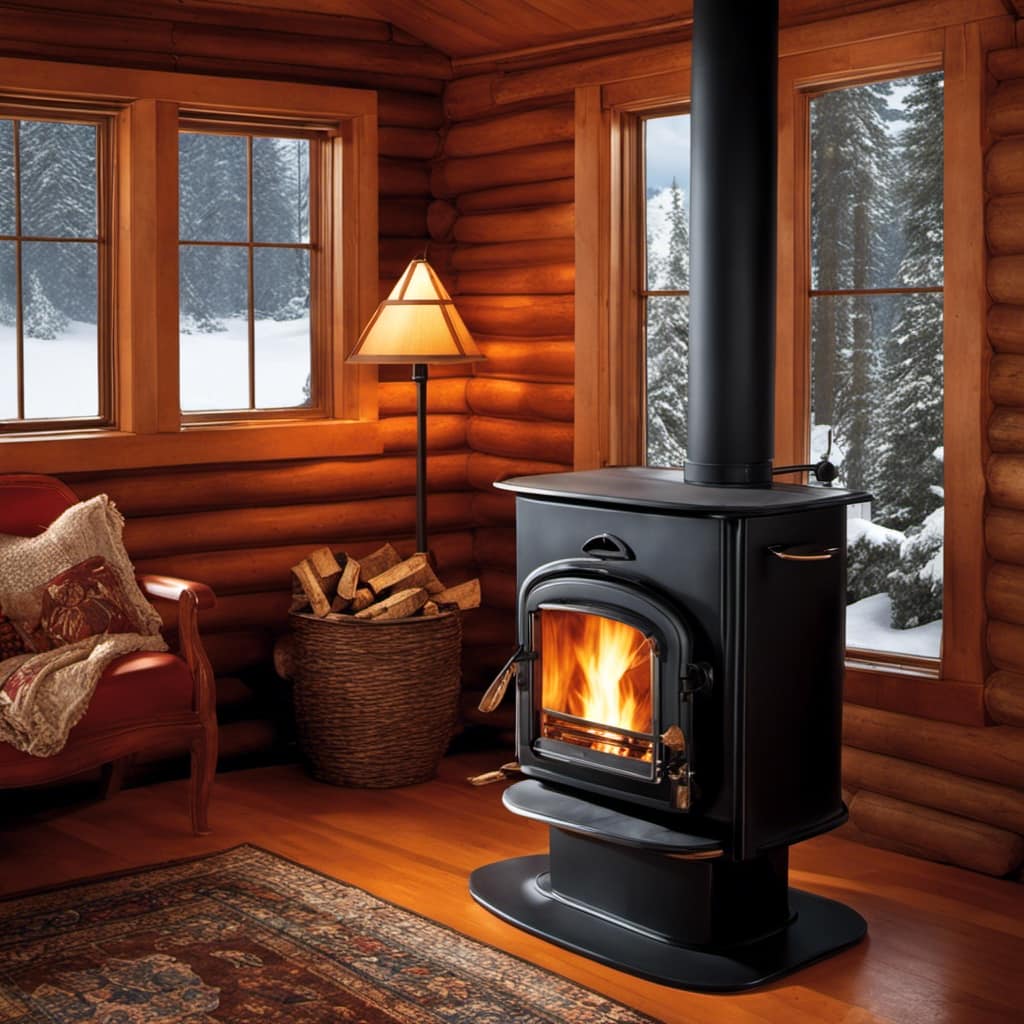
Secondly, ensure that the flue cap is in good condition and securely attached to prevent debris and animals from entering the chimney.
Lastly, examine the flue damper to ensure it opens and closes properly.
Ensuring Proper Ventilation for the Wood Stove
To prevent smoke buildup, it’s essential to properly ventilate the wood stove. This ensures that the combustion process is efficient and safe. Here are some key ventilation requirements and safety precautions to consider:
-
Ventilation Requirements:
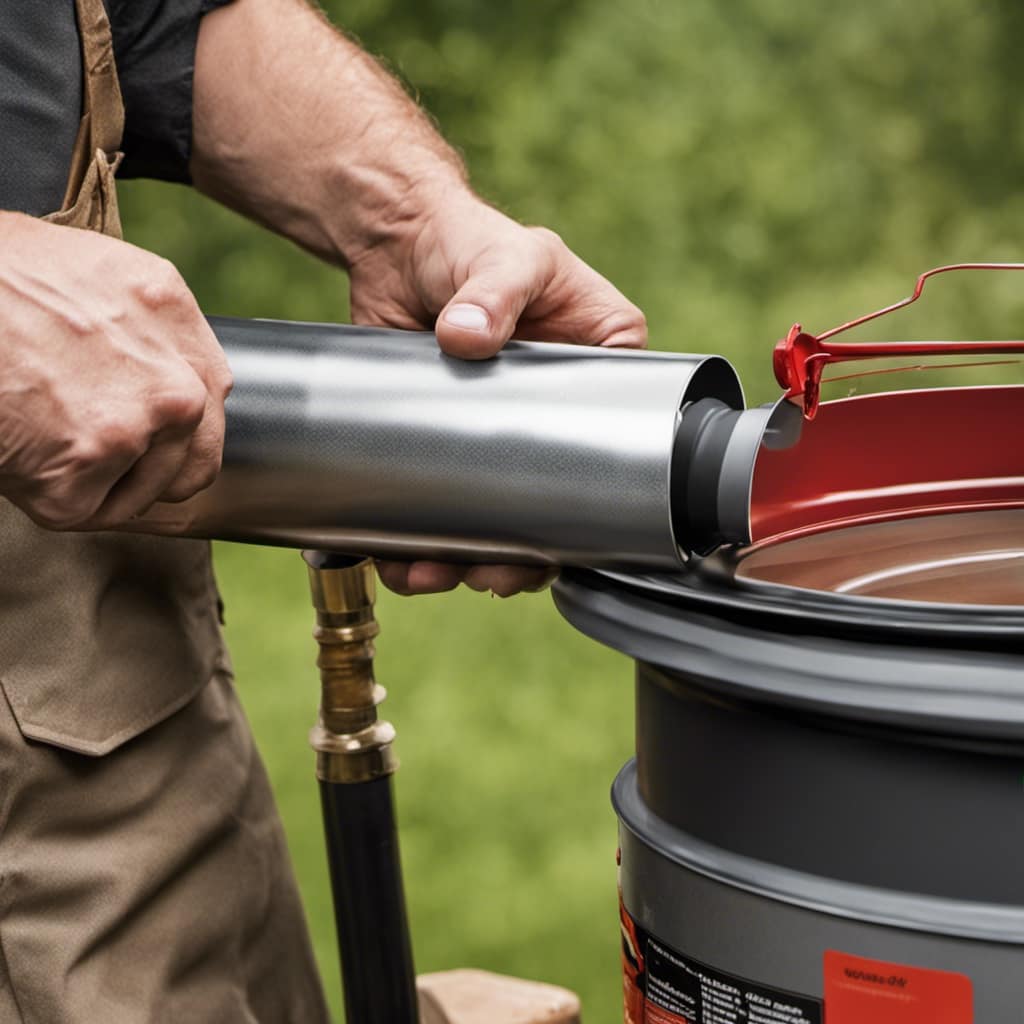
-
Install a chimney that meets the height requirements for your area to promote proper draft.
-
Use double-wall stovepipe to reduce heat loss and maintain optimal airflow.
-
Safety Precautions:
-
Install a carbon monoxide detector near the wood stove to monitor for any potential leaks.
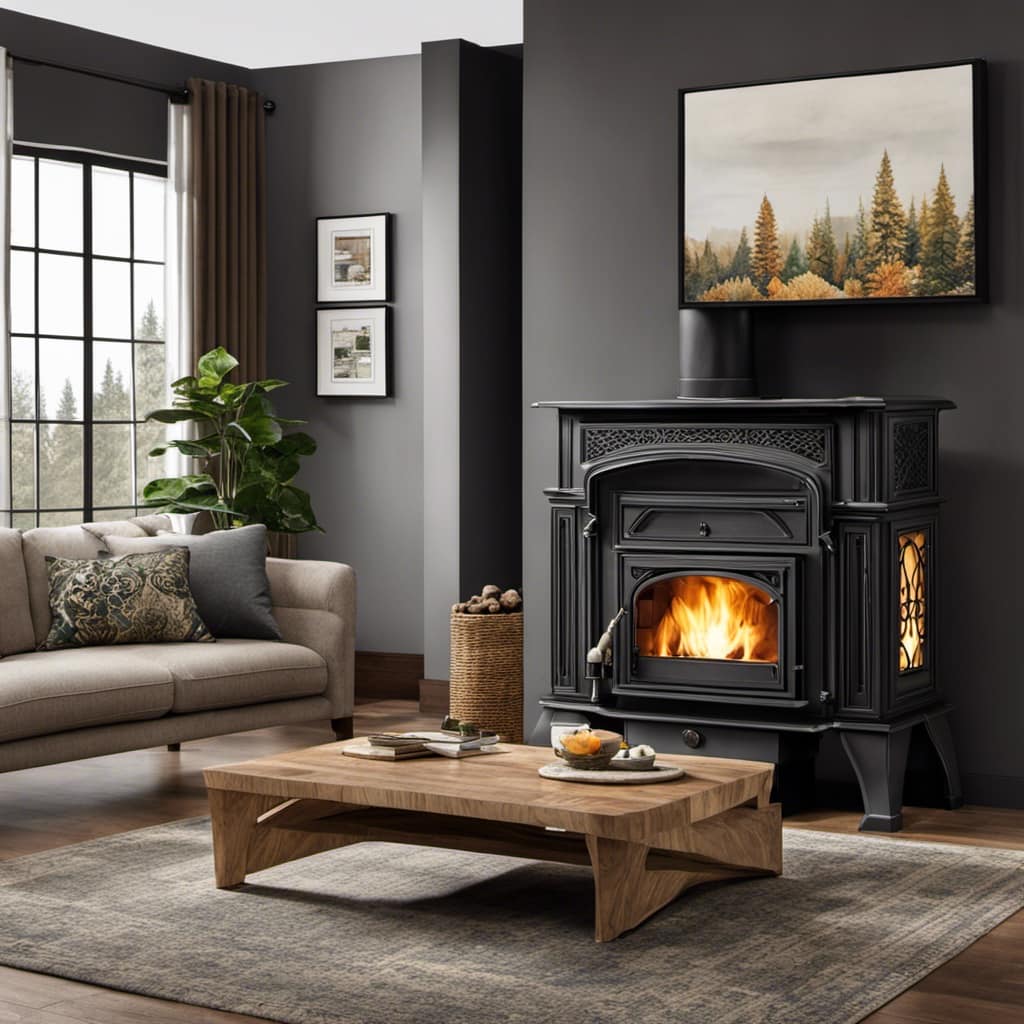
-
Keep flammable materials at least three feet away from the stove to prevent fire hazards.
-
Clean the chimney regularly to remove creosote buildup, which can lead to chimney fires.
Preparing the Hearth and Surrounding Area
I’m clearing out the ashes from the hearth to make sure it’s ready for the wood stove.
Fireplace maintenance is crucial to ensure safe and efficient operation. Before installing a wood stove, it’s essential to prepare the hearth and surrounding area properly.
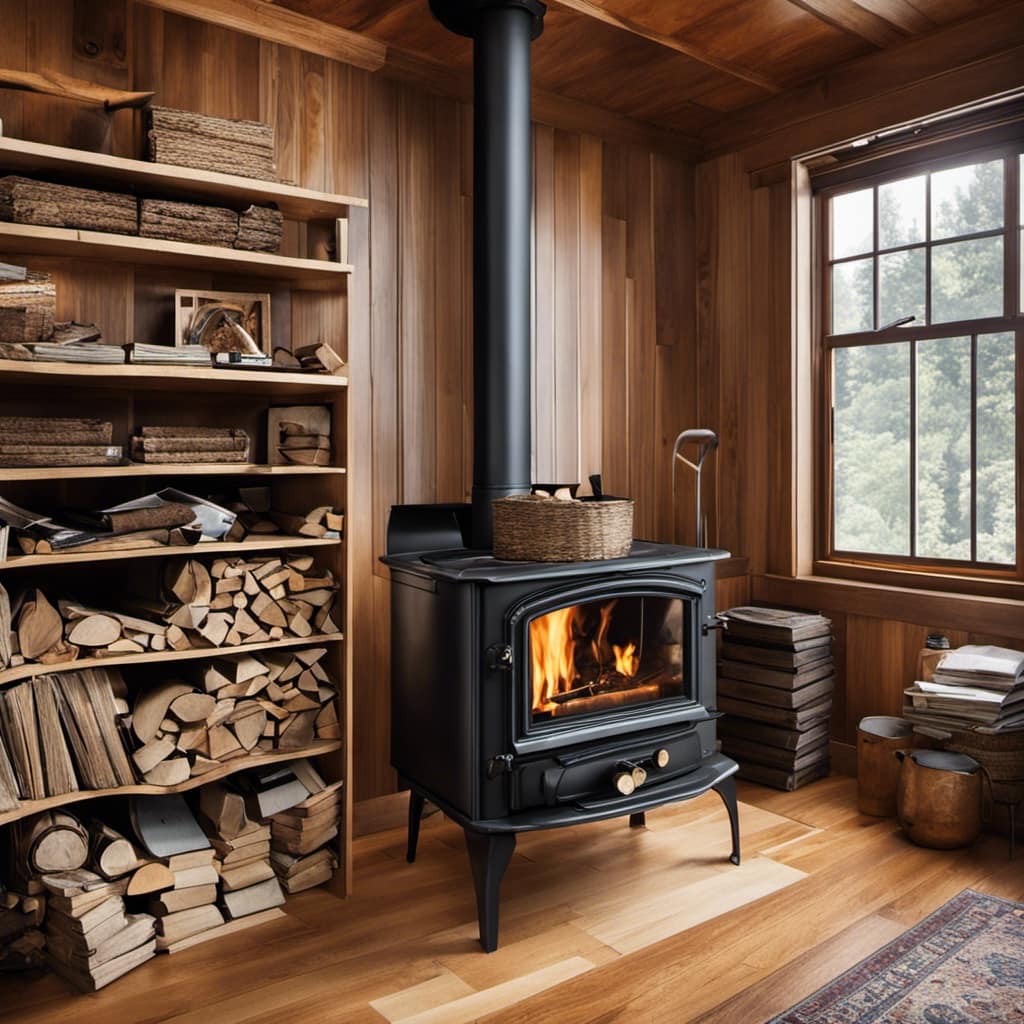
Start by removing all debris, including ashes, soot, and loose bricks. Use a fireplace shovel and a metal bucket to collect the ashes, ensuring they’re completely extinguished before disposal.
Next, inspect the firebox for any signs of damage, such as cracks or loose bricks. Repair or replace any damaged components before proceeding.
Additionally, check the chimney for any obstructions or buildup of creosote, a flammable substance that can cause chimney fires.
Regular cleaning and inspection, along with following safety precautions, will help maintain a safe and efficient wood stove.
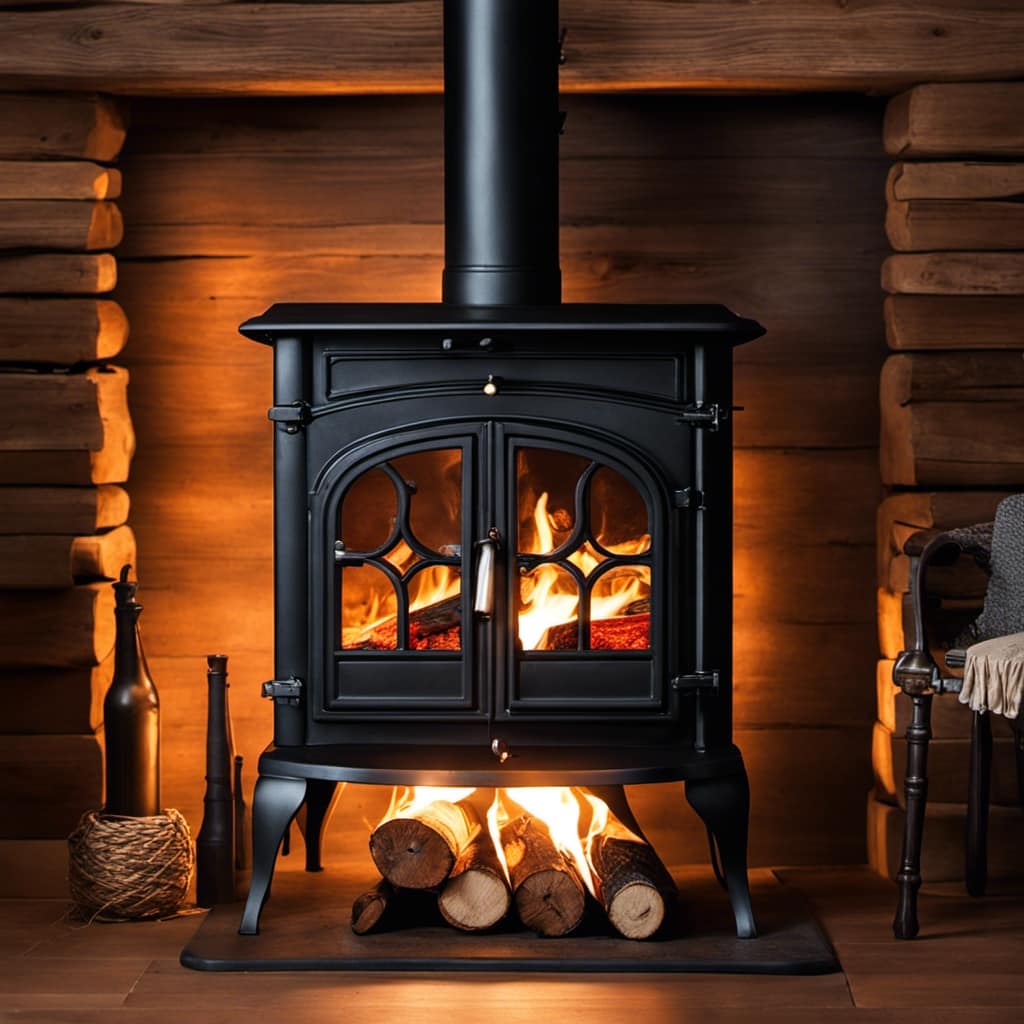
Frequently Asked Questions
Can I Install a Wood Stove in a Fireplace That Has a Damaged Chimney?
Yes, you can install a wood stove in a fireplace that has a damaged chimney. However, it is crucial to repair the chimney before installation to ensure proper ventilation and safety.
What Type of Wood Should I Use for My Wood Stove?
I recommend using hardwoods like oak or maple for your wood stove. These types of firewood burn longer and produce more heat compared to softwoods. They are the best wood for wood stoves.
Can I Use a Wood Stove Without a Chimney Liner?
Using a wood stove indoors without a chimney liner is like driving a car without brakes. It’s essential for safety to have a properly installed liner to prevent chimney fires and ensure proper ventilation.
How Often Should I Clean My Wood Stove and Chimney?
I clean my wood stove and chimney at least once a year to ensure proper functioning and safety. Regular cleaning prevents creosote buildup, reduces the risk of chimney fires, and improves the efficiency of the wood stove.
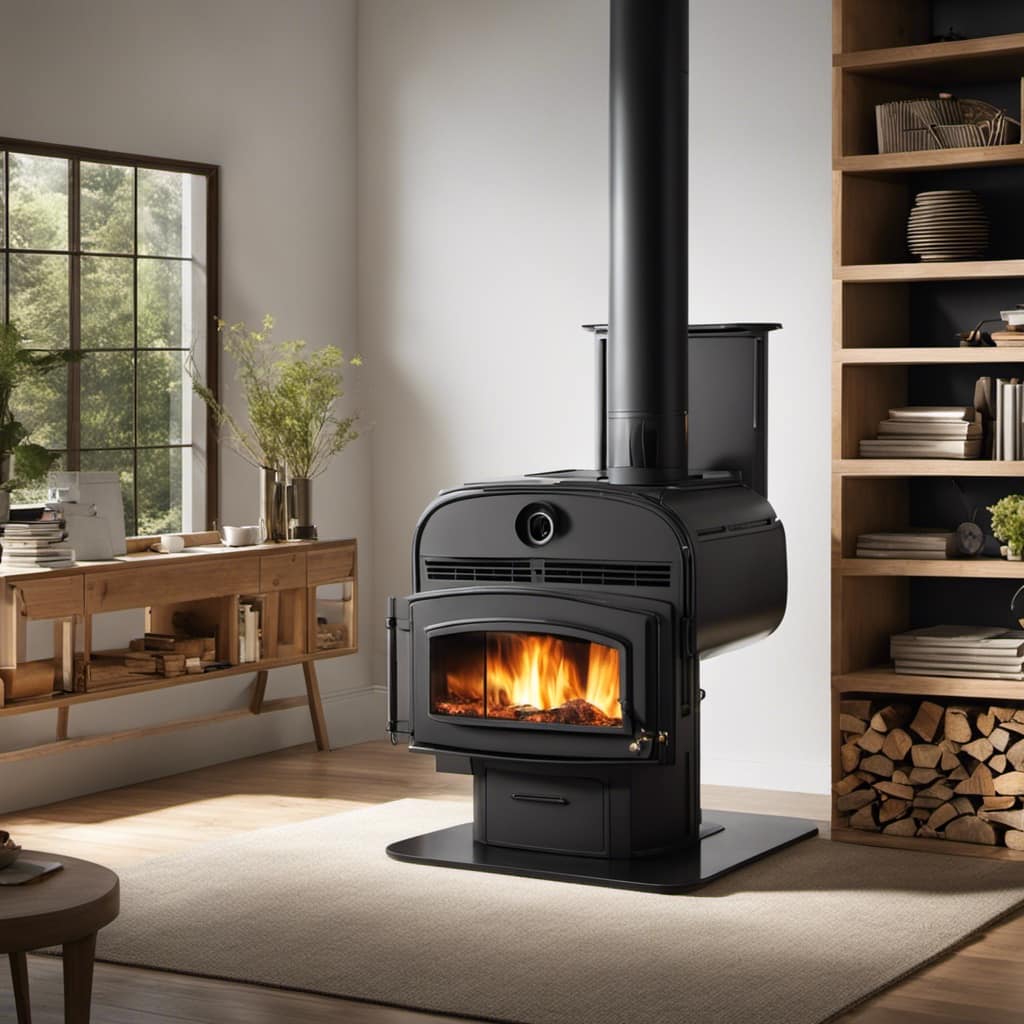
Can I Install a Wood Stove in a Fireplace With a Metal Flue?
Installing a wood stove in a fireplace with a metal flue can present challenges. Proper maintenance and cleaning are crucial. Regularly inspect the flue for any damage or blockage to ensure safe and efficient operation.
Conclusion
In conclusion, preparing a fireplace for a wood stove requires careful assessment, thorough cleaning, and proper inspection of the flue system.
Ventilation is crucial to ensure the safe operation of the wood stove.
Additionally, preparing the hearth and surrounding area is essential for a functional and aesthetically pleasing setup.
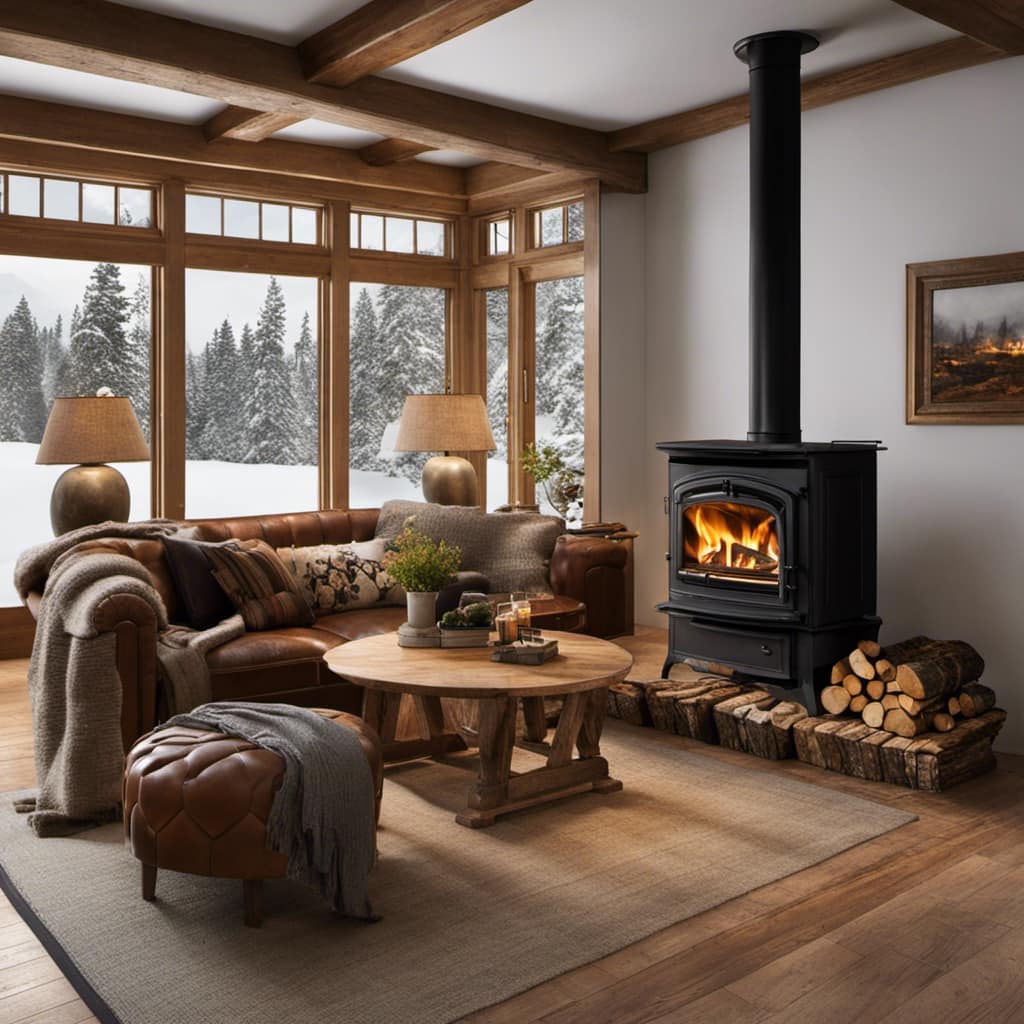
As the saying goes, ‘A well-prepared fireplace is the heart of a warm and cozy home.’
So, embrace the task with diligence to create a comforting and efficient wood stove experience.
Growing up surrounded by the vast beauty of nature, Sierra was always drawn to the call of the wild. While others sought the comfort of the familiar, she ventured out, embracing the unpredictable and finding stories in the heartbeat of nature.
At the epicenter of every remarkable venture lies a dynamic team—a fusion of diverse talents, visions, and passions. The essence of Best Small Wood Stoves is crafted and refined by such a trio: Sierra, Logan, and Terra. Their collective expertise has transformed the platform into a leading authority on small wood stoves, radiating warmth and knowledge in equal measure.




